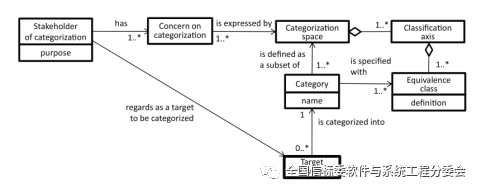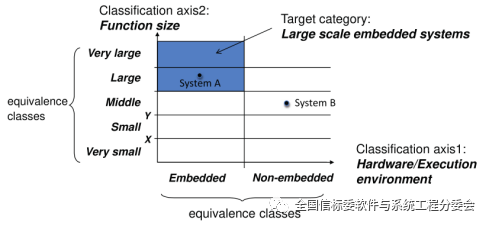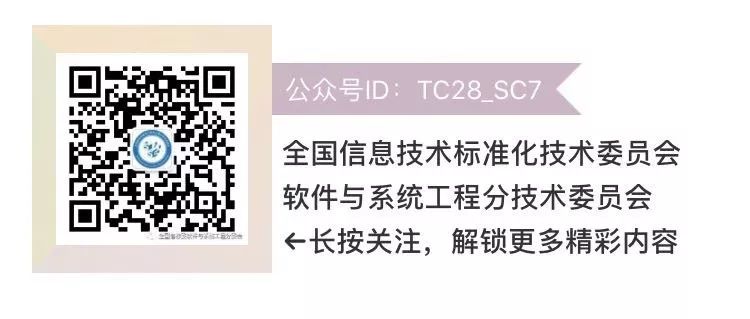In recent years, there have been numerous changes in the field of information technology: hardware iterations have driven IT technology innovations, promoting the development of operating systems and communication networks; many new applications have emerged, such as Enterprise Resource Planning, Supply Chain Management, Social Networking Systems, Medical Systems, Traffic Management Systems, Embedded Systems, Interactive Multimedia Systems, Mobile Systems, and Desktop Operating Systems; the emergence of Software as a Service (SaaS), Big Data Systems, and Cloud Computing Services; in terms of security, the impact range of system and software quality has expanded. As a rapidly developing field, the classification methods of system and software engineering are also continuously iterating. ISO/IEC TR 12182:2015 “Systems and Software Engineering – Classification Framework and Application Guide” provides readers with a framework and reference examples for classifying systems and software.

The rapid development characteristics of the IT industry determine that the classification methods of system and software engineering need to be updated over time. Against this background, ISO/IEC TR 12182:1998 was revised to ISO/IEC TR 12182:2015, with the main changes including:
• The scope has expanded from software to systems and software;
• A framework is provided to describe classifications rather than a specific classification method;
• Relationships with other related standards in the field of system and software engineering are given.
ISO / IEC TR 12182:2015 “Systems and Software Engineering – Classification Framework and Application Guide” includes specific classification frameworks and application guidelines for the classification framework, allowing users to clarify its scope based on system objectives. The classification framework includes general principles, classification models, and the organizational structure of classification axes; the application guidelines for the classification framework include descriptions of classification items, classification steps, examples of defining classifications, and instances of using classifications.
ISO / IEC TR 12182:2015 is applicable to various stakeholders in the field of system and software engineering, including developers and participants in standards related to system and software engineering. This standard defines the category to which a specific technology applied belongs within system and software, which can help developers find the correct technology set and improve development efficiency. For participants in system and software engineering standards, this standard allows for the prioritization of specific standards within the framework of the system and software engineering standards system. In particular, when formulating new standards, the classification framework provided by this standard can be used for positioning. Clearly defining the classification of the target system can not only play a coordinating role within the project but also improve the accuracy of standard users.

Figure 1 Classification Model Framework
Figure 1 presents the classification model framework, which consists of concepts and their relationships, and can be used by different stakeholders to define their respective classification frameworks for the target system based on their needs. Typically, stakeholders’ demands for classifying the target system can be summarized into several concerns. These concerns are represented as categorization spaces in the classification framework. A classification axis is a range that may contain one or more levels (Equivalence class). A categorization space may contain one or more classification axes. Categories are defined in the categorization space, and named categories are subsets of the categorization space that may contain one or more levels.
For example, if “Large-Scale Embedded Systems” is defined as the target system, a categorization space can be defined with two axes: classification axis 1 for hardware/execution environment and classification axis 2 for functional scope. Classification axis 1 contains two levels: Embedded and Non-embedded; classification axis 2 contains five levels: Very Large, Large, Medium, Small, and Very Small. For System A in Figure 2, it can be defined as a “Large-Scale Embedded System,” while System B can be defined as a “Medium Embedded” system. In this way, the target system can be defined within a specific area of the categorization space.

Figure 2 Example of a Categorization Space with Two Axes
When selecting the organizational structure of classification axes, the demands of the target system must be considered, as shown in Figure 3. Figure 3 illustrates the relationships between important concepts of the target system and classification axes, including the architecture/structure of the target system, properties, operational environment, and data. These important concepts can be used to determine the classification axes.

Figure 3 Example of Classification Axis Model for Target Systems
The application guidelines of the classification framework provide examples of using the classification framework, including the applicability of technologies/standards and supporting IT decisions. Among these, the most typical case of using the classification framework is to determine the applicability of specific technologies/standards to the target system. As shown in Figure 4, for developers of technologies/standards, the focus is on the applicability of the technology/standard to the target system; for users of technologies/standards, the focus is on selecting the appropriate technology/standard for the target system.

Figure 4 Model for Using Classification Framework of Technologies/Standards
